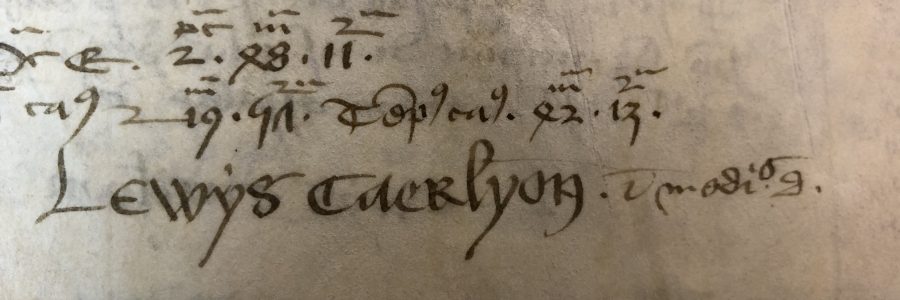
An astronomer’s personal notebook: Lewis of Caerleon & CUL MS Ee.3.61 (Part 1)
Dr Laure Miolo is a Munby Fellow in Bibliography at Cambridge University Library. As part of her project, she is working on Lewis of Caerleon’s extant manuscripts and astronomical works, and more particularly on his notebook, MS Ee.3.61...
On the 9th November 2020, the British Library announced that it had acquired a presentation copy of Lewis of Caerleon’s astronomical works. This manuscript was copied soon after his release from the Tower of London (after March 1485) under the close supervision of the astronomer himself, who carefully commissioned this neat copy of his own scientific production for an unknown wealthy patron. Several manuscripts owned or commissioned by Lewis of Caerleon survive; one of the most intriguing is his personal notebook preserved in Cambridge University Library under the shelfmark Ee.3.61. This partly autograph manuscript of 192 folios of paper and parchment provides a great deal of details on the astronomer’s sources and practices as well as the early steps of his works.
A Cambridge alumnus involved in political intrigue
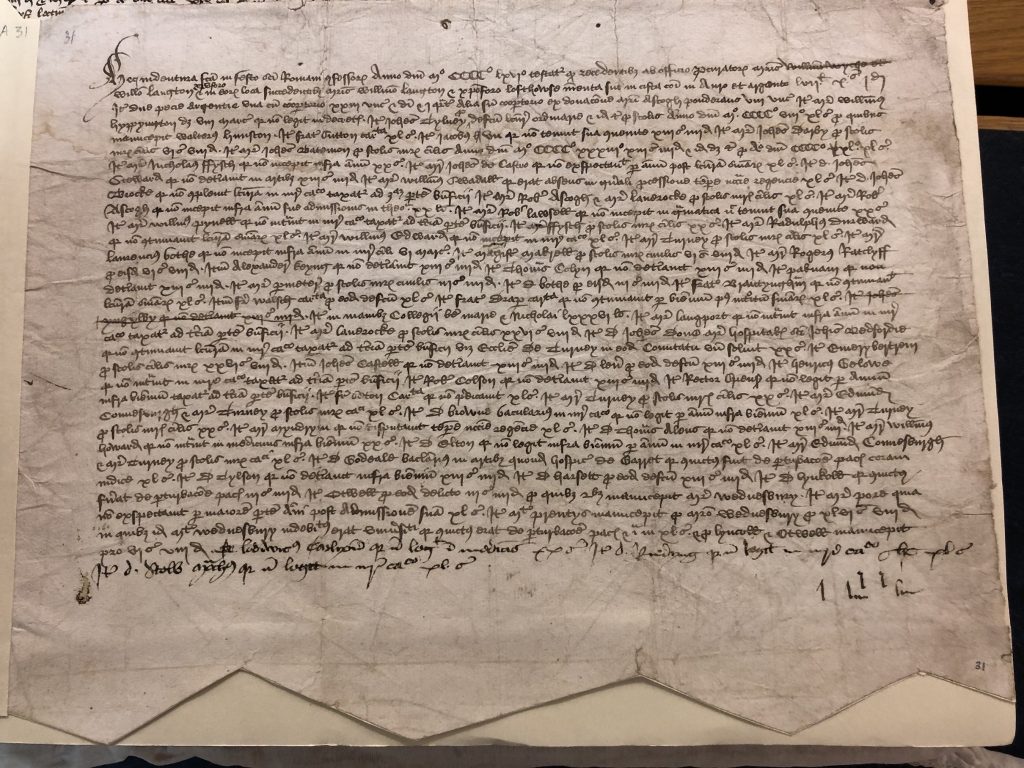
Lewis of Caerleon was educated in Cambridge where he was admitted Bachelor of Medicine in the Academic year 1465-1466. In 1466, he received a fine of 20s, as a consequence of his failure to lecture medicine (above). These brief details are all we know of his student years in Cambridge, at a time when the Faculty of Medicine admitted few scholars. Despite the lack of evidence concerning his early career, it is known that by 1481 he had become a Doctor of Medicine as he mentions it himself in some places in his notebook (below). Similarly, extant sources do not help to identify the University where he obtained his doctorate in medicine. It may be that he moved to the University of Oxford as he elaborated some astronomical tables based on the Oxford meridian and gave tables to this university in parallel with a similar donation he made to the University of Cambridge. Two records of manuscript donations respectively to Merton College, Oxford and to Clare Hall (now Clare College) show that Lewis of Caerleon had links to both universities, although no more evidence seems to have survived.
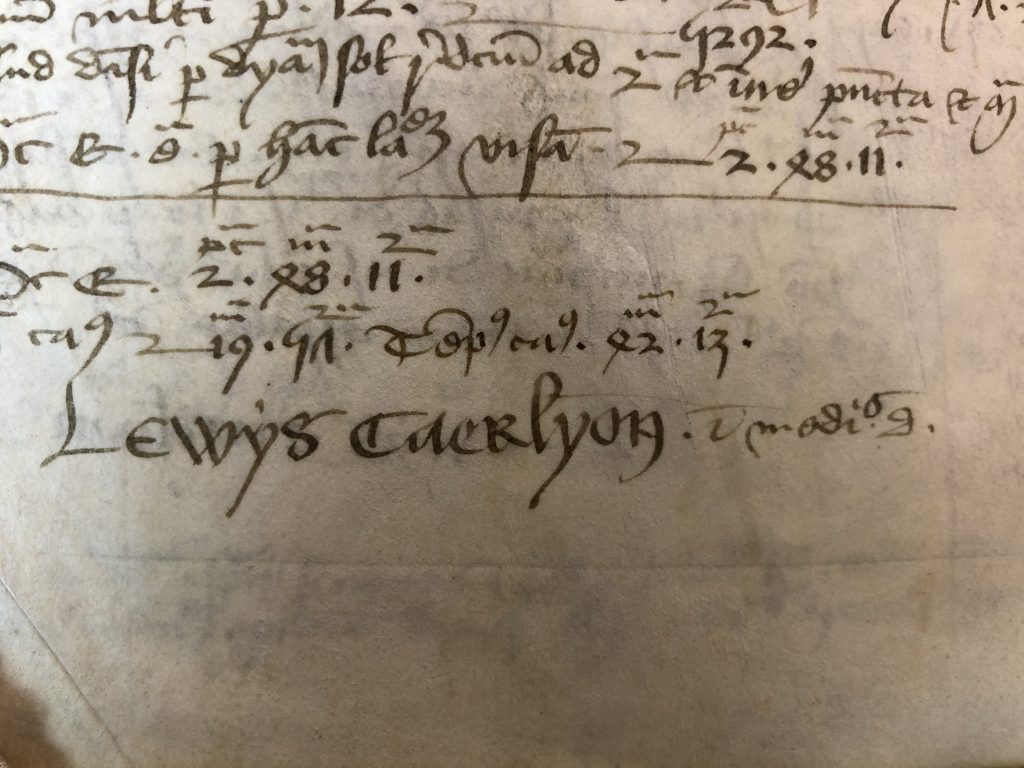
At an unknown date, Lewis began to serve as physician to Lady Margaret Beaufort (d. 1509), her son Henry (the future Henry VII, d. 1509) and his mother-in-law Elizabeth Woodville (d. 1492). In the troubled context of the end of the Wars of the Roses, the Welsh physician clearly supported the Lancastrian faction and in return received patronage from them. The historian Polydore Vergil (d. 1555) identified him as the secret intermediary between Margaret Beaufort and Elizabeth Woodville in the conspiracy against Richard III. Indeed, the role Lewis of Caerleon played in these negotiations – resulting in the promise of a marriage between Henry of Richmond and Elizabeth of York – likely led to his imprisonment in the Tower of London in 1484. His incarceration and despoliation is well documented in his works. Interestingly, Lewis’s time in the Tower of London was quite a productive one in terms of his astronomical career. While deprived of his astronomical tables and probably of all his books, he elaborated new eclipse tables as well as eclipse canons (that are texts providing the method to compute eclipses) and also observed the famous total solar eclipse of 16 March 1485 that he had previously calculated. Lewis was released the same year after Richard III’s defeat and death. He was rewarded by Henry VII with several grants and was made knight of the king’s alms in St George’s chapel in 1488. Finally, he continued to serve as royal physician to the Queen, Elizabeth of York, likely until his death around 1495. In parallel with his physician and courtier career, Lewis of Caerleon maintained a deep interest collecting, compiling and creating astronomical and astrological texts and tables, as well as practising astronomy, and probably also astrology.
A practitioner sourcebook
Before his incarceration, Lewis of Caerleon compiled an important notebook for his own use. Despite his addition of a short note and computation of the conjunction of Saturn and Mars occurring in 1484, most of the volume has been thought to have been assembled between 1481 and 1482, according to dated calculations of solar eclipses (below left). The main part of this manuscript of fifty-one quires was copied by Lewis of Caerleon himself, while a small portion was commissioned, then corrected and annotated by him in the margins. Today this manuscript contains around forty texts and tables, some of which are Lewis’s own composition, although the table of contents in his hand on the verso of a parchment flyleaf at the beginning of the volume only includes twenty-six works following the current order (below right). This difference may be explained by the fact that Lewis had added some works to the volume after having written this table. Moreover, the vicissitudes of the manuscript’s history led to the loss of certain texts mentioned in the table of contents. For example, the astrological treatise of the 14th-century Mertonian and astrologer John Ashenden (d. c. 1368) on the great planetary conjunctions of 1357 and 1365 has disappeared from the manuscript, as well as the beginning of the popular Introduction to Astrology of Alcabitius (al-Qabīsī). These texts along with others demonstrate an interest – if not necessarily an active practice – by Lewis in the field of astrology.
In this respect, the astrological treatise dated to 1441, Cum rerum motu, of which this manuscript is the unique witness, is striking. Although Lewis is not the scribe of the text, he supervised the copy and elaborated the horoscopes attached to it. Astrology at the 15th-century English royal court was an instrument of power and propaganda used for political purposes by the King and his courtiers. The fates of some court astrologers demonstrate the insecurity of a status that remained unofficial until the 16th century. The presence of this anonymous treatise shows that Lewis was attentive to an important case that happened during Henry VI’s reign. According to Hilary Carey, the text Cum rerum motu was composed by an astrologer linked to Cambridge and supportive of the King, who had been asked to compose an alternative and more positive judgment on Henry VI’s nativity after two horoscopes – predicting the king’s imminent death – were made at the request of Eleanor Cobham, duchess of Gloucester (d. 1452) (image below left). In 1441, she was condemned to a life sentence while her two astrologers were arrested and executed. While this treatise was produced some decades before Lewis supervised this copy, he was likely interested in it for the possibility of a post eventum analysis. Another reason lies in the context in which the treatise was produced: the anonymous author of Cum rerum motu was quite an admirer and perhaps a disciple of John Holbroke (d. 1437) who was Master of Peterhouse, Chancellor of the University of Cambridge, and a chaplain of Henry V and Henry VI, and well-versed in the science of the stars. Lewis of Caerleon was certainly obliged to this first generation of Cambridge astronomers. It is noteworthy that he also carefully copied in his notebook the astronomical tables of Cambridge and their canons composed by John Holbroke in 1433 (below right).
Lewis of Caerleon is the heir to an important astronomical tradition and his notebook demonstrates he was very well aware of this. More a philologist than a mere collector, he copied or supervised copies of important astronomical masterpieces, such as the Toledan Tables (translated from Arabic at the end of the 12th century). According to numerous references present in his notebook as well as in his other writings, he also knew the works of the Arabic astronomers al-Battānī (d. 929) and Jabir ibn Aflah (d. 1150). A great part of the sources he used to compose his own works are in his notebook and most of them come from 14th-century astronomical traditions elaborated or adapted on both sides of the Channel. Thus, treatises of John of Lignères (fl. 1320-1335) and John of Saxony (fl. 1327-1335), two key figures of the 14th-century Parisian astronomical scene, who adapted the Alfonsine Tables, are copied and annotated in this notebook. The 14th-century and early 15th-century Oxford innovations in astronomy and mathematics are also well represented with the Mertonians Simon Bredon (d. 1372) and John Killingworth (d. 1445), who constituted important sources for Lewis.
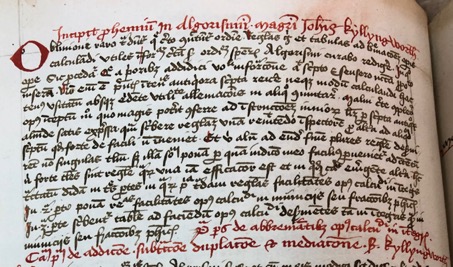
According to several notes, it also seems that Lewis had access to an autograph copy of a widely circulated calendar with astronomical tables by the Franciscan John Somer (d. c. 1409), de copia manus proprie Ffratris Sommer (f. 152r).

Finally, amongst these sources, there are also works of an author who greatly inspired Lewis of Caerleon: the abbot of St Albans, Richard of Wallingford (d. 1336). Although Lewis explicitly based a part of his eclipse and parallax tables on Richard’s Albion (1326), a text on a sophisticated equatorium, this treatise is not in the manuscript. Indeed, the volume only includes the Rectangulus, a text on an instrument that enables the astronomer to compute (and observe) celestial coordinates,composed by the abbot in 1326 (images below). However, Lewis of Caerleon refers extensively to his ‘spiritual master’ throughout his notebook and provides important comments on Richard of Wallingford’s writings. Like his predecessors, Lewis was nurtured by a whole tradition of astronomical and astrological knowledge ranging from the 12th century translations of Arabic writings to 14th and 15th century adaptations and compositions, but he can be considered to have built a bridge between two generations of scholars, active in the 14th and 15th centuries, who innovated in the fields of astronomy/astrology and more generally in mathematics. Thanks to the Lancastrian patronage, his collecting efforts and his knowledge of previous writings, Lewis of Caerleon undertook innovative and cutting-edge astronomical works. In the next blogpost, part of his earliest astronomical compositions extant in Ee.3.61 and the later history of this notebook will be considered.
Bibliography
Polydore Vergil, Anglica Historia, Basel, 1555.
Hilary M. Carey, Courting Disaster: Astrology at the English Court and University in the Later Middle Ages (New York: Palgrave Macmillan, 1992), pp. 145-47.
Hilary M. Carey, ‘Henry VII’s Book of Astrology and the Tudor Renaissance’, Renaissance Quarterly, 64:3 (2012), 661-710.
Pearl Kibre, ‘Lewis of Caerleon, Doctor of Medicine, Astronomer and Mathematician (d. 1494?)’, Isis, 43:2 (1952), 100-108.
John D. North, Richard of Wallingford. An Edition of his Writings, 3 vols. (Oxford: Clarendon Press, 1976), III, pp. 217-220.
Keith Snedegar, ‘Caerleon, Lewis (d. in or after 1495)’, in Oxford Dictionary of National Biography (Oxford: Oxford University Press, 2004).

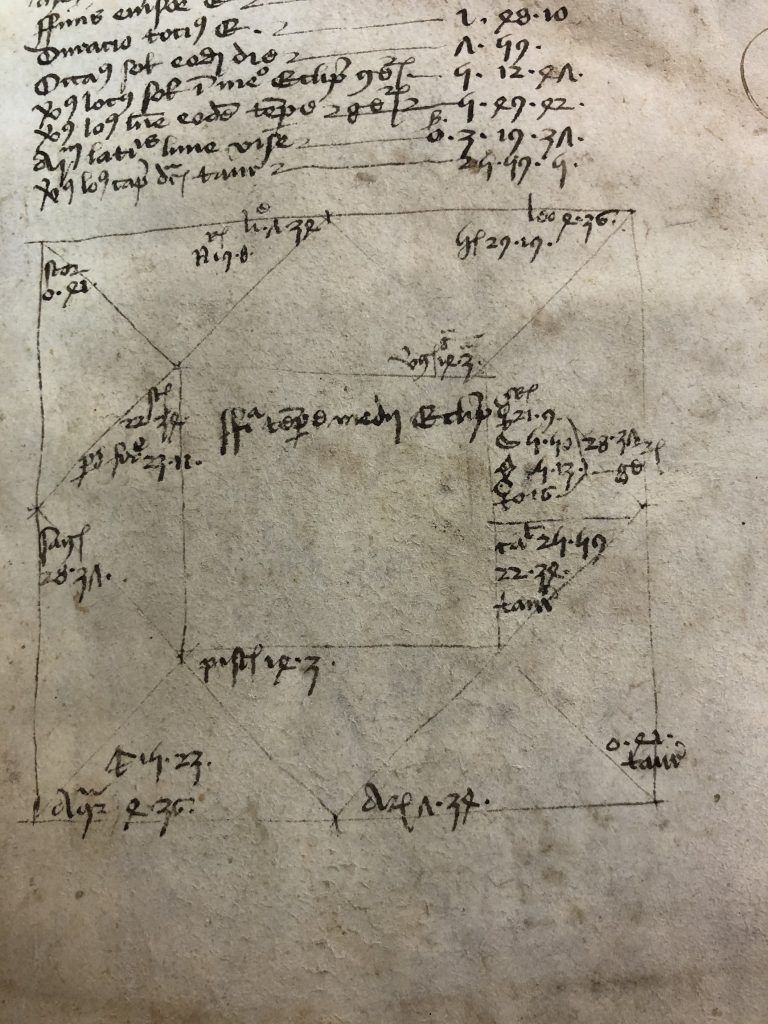
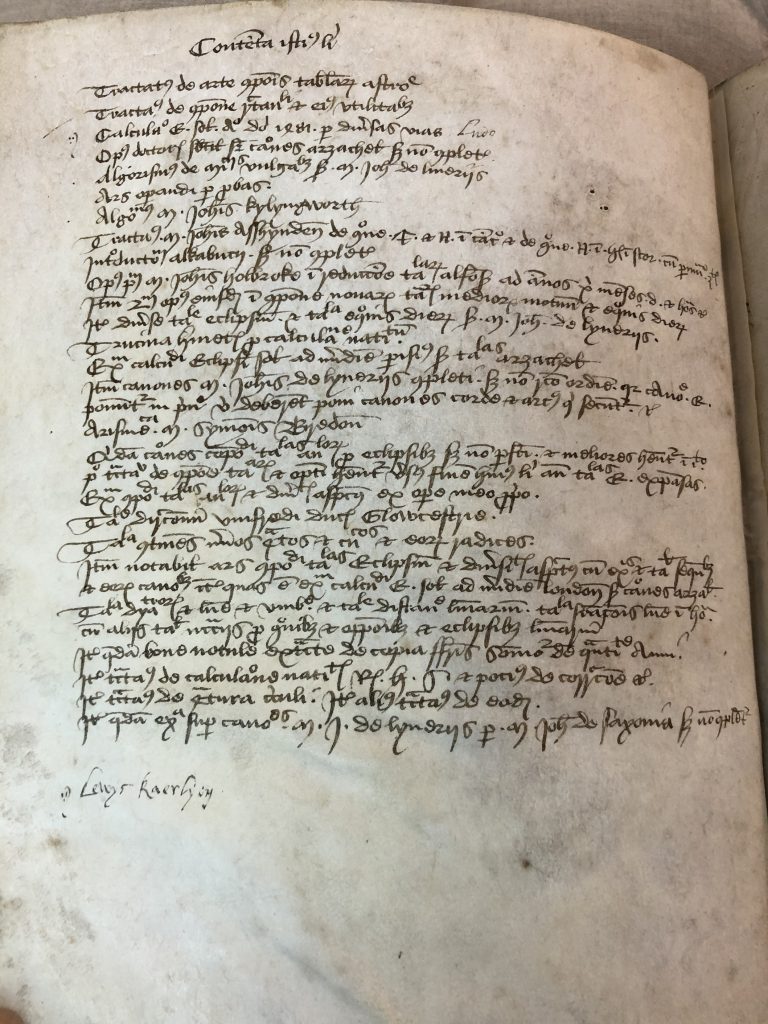
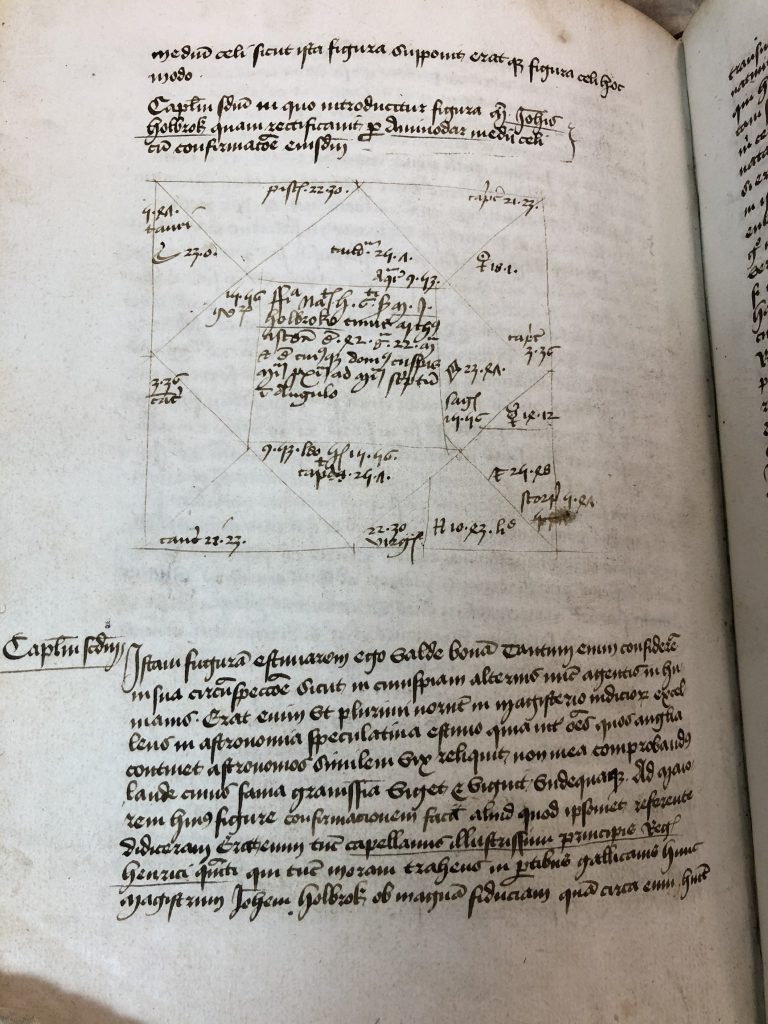
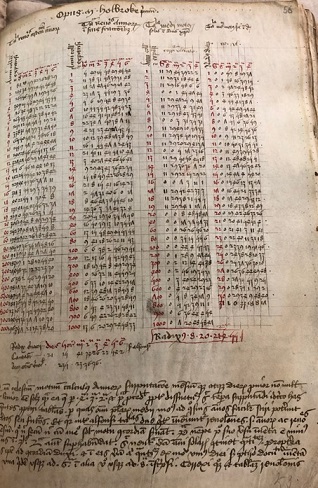
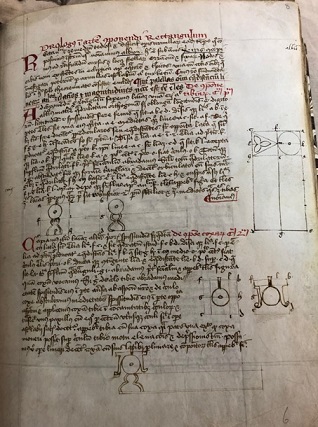

Fascinating. Thank you.